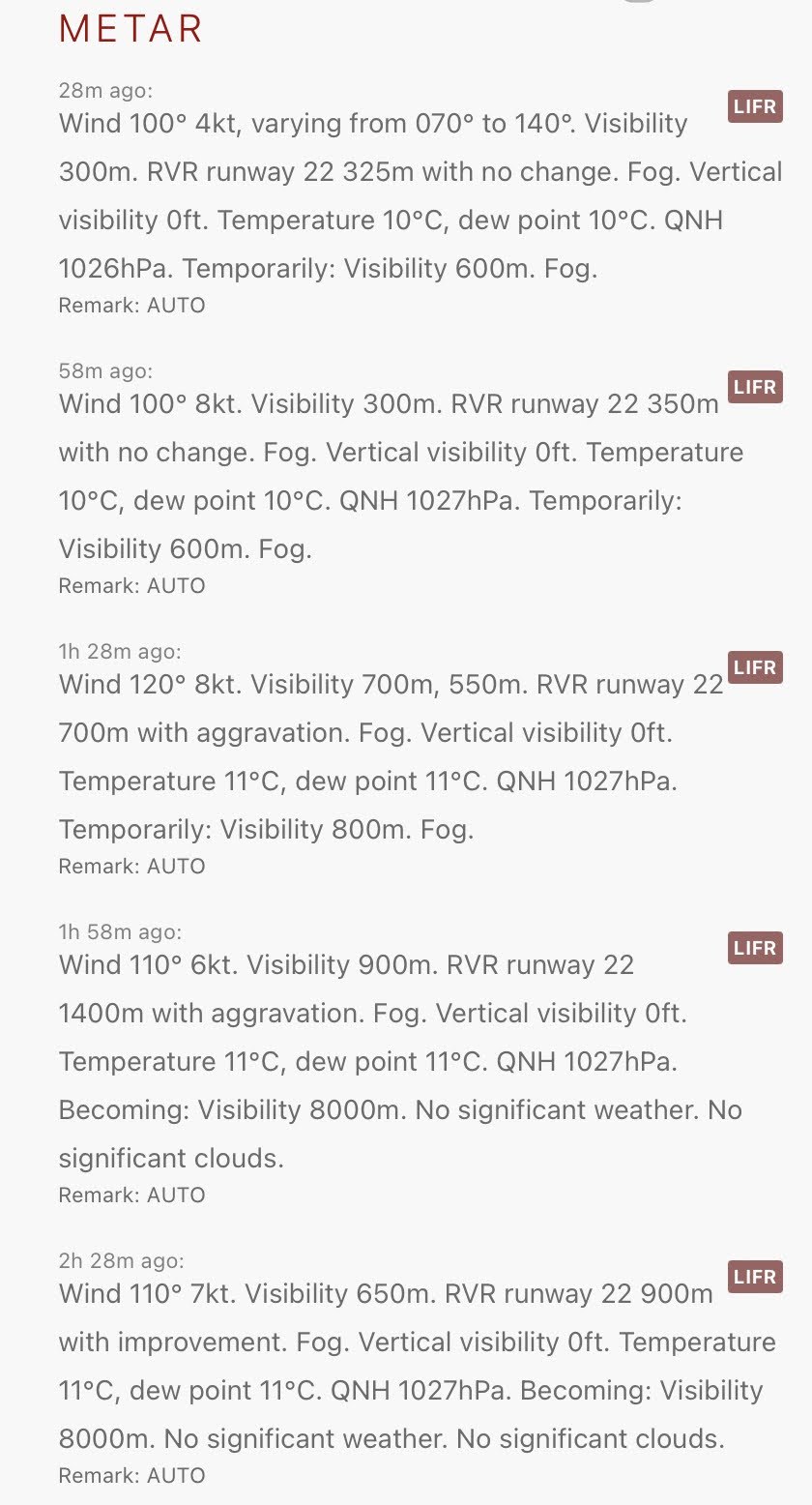Mooney_Driver wrote:
Having said that, a data point I did a few years back did indeed show that since the introduction of GAFOR, around 70% of the days in that area were VFR as opposed to 30% when crossing the Alps is involved.Crossing the Alps is for sure on more than just 30% of the days possible. Yes, sometimes the passes are blocked by low clouds, therefore GAFOR is X or M. But if you fly high above the passes, there are many days you can cross without issues. Just a few days ago, I flew above the clouds towards Ticino and Valais, while GAFOR did show Gotthard and Furka as closed (X) and the Gemmi as marginal (M). In the end, it was no issue at all, as the clouds were starting south of Altdorf and I could climb in CAVOK overhead Lake Lucerne up to 10.000 ft. On my way back, I flew over the Jungfraujoch, which was completely clear of any clouds. The cloud layer in the north was hanging around 6.000-8.000 ft up to the Thurnersee. Thereafter, I could descent and fly again in CAVOK up to my destination. In other words: A good example you can’t just measure GAFOR statistics to show usable days to cross the Alps.

I am unable to provide more than crude personal experience, but I do keep a track record per year of something which would be called dispatch rate at AOC business. As I am saving any flight planning I do, I have the data how many flights are planned and cancelled by weather. Yes, the rate of ‘planned and(!) flown flights’ has increased slightly over the last five years (and I did raise my personal weather minima a tad due to some close encounters). On the other hand my business engagements gained quite substantial flexibility, which does have an influence on the numbers as well. What bothers me more is the decreasing reliability of weather forecasts since 9/11 and pandemics reduction of airborne stations. Summary, I guess this is all feelings talks not numbers.
Frans wrote:
A good example you can’t just measure GAFOR statistics to show usable days to cross the Alps.
Well, of course I know that. That is why I called it a data point. Why? Because GAFOR still is one forecast which most PPL Pilots use as their decision tool, which is not wrong but which, as you rightly say, is limiting.
As you can imagine, we had lively discussions about the figures here too. But you have to look at it from another direction: This is 365 days per year. We don’t really fly that often or watch out that often if weather is suitable or not. If we know weather is crap, we never consider flying. Hence, those figures were suprising to me as well, but after verifying them, came out pretty accurate. BTW, we considered both O and D as “Flyable”.
Yes, I am clear on the fact (and have done it myself) that particularly the inner Alpine routes can often be overflown and GAFOR can give “wrong” incentives. However, north and south of the alps, it has to be taken into account that both a climb out and descent must be possible. Looking at times when both South and north are VFR at the same time AND the cloud tops are below the usual ceiling of our airplanes are often less than we might think.
One should add that most pilots I know will not fly even in D conditions. We had the annual fly in in Winterthur last September. Weather was not brilliant but flyable, yet 60% of participants cancelled. So many won’t even consider “D” as flyable.
Also you need to consider that this took into account some 30 years. We all know that years can be hugely different. This year, it was certainly a lot more than those figures, as it was pretty darn brilliant. But that was the question: has the availability of VFR risen? And I think that is the case. Which proves the point I was trying to make: In the 30 year stats we get 30 and 70 % availability, nowadays we most likely have a lot more.
November weather in Normandie: until Friday = CAVOK for the whole weekend, turns out to be foggy:
AUTO-METAR data are very dodgy, does this looks flyable? 


MedEwok wrote:
I have zero data to back this up, but it seems to me that through climate change, the number of days where you can fly VFR is increasing a lot. In this year at least, I can barely remember any days where you couldn’t fly VFR for at least 100 nm in Northern Germany since about March.
Could very well be. All that weather has gone further North and stopped in my area. Can’t remember ever having had such a bad summer (spring, summer, fall) as this year  Seriously. it has been records of bad weather this year.
Seriously. it has been records of bad weather this year.
Please tell the global warming gods to blow the fog off my airfield. To be fair, we have had amazingly good weather this year.
I think the experts concern is not about things being a bit warmer, or the oceans rising a bit, but about a dramatic change in weather like the gulf stream no longer flowing up to Ireland, for example.

My club (at LFPN) had 277 flown days in 2022.
One can argue that some CAVOK days nobody had time to fly and some days it was just a circuit in the mist. But it gives an idea.
Do you think 277 is good or bad?
It’s an interesting number to find out for one’s local.
I think the more “club oriented” the activity is, the fewer non-weekend movements there will be – because aeroclubs offer a lower barrier to entry, which in turn means a higher % of activity will be weekend-only. And weekend-only flying is much more wx-sensitive – by a factor of 7/2 
Whereas for example at EGKA there are loads of weekday movements – unless it is OVC002 or similar. There are days with zero traffic (and I have landed there as the only movement that day, a few times) which is inevitable for the UK, but probably very few. Those days are very bad for the airport, financially.
However LFPN has practically south east UK weather… and Brits (outside London) are certainly no richer than Parisians 
I start to look at these statistical data guided from historians view, like the folks from CDN
. Climate change is so slow, human recognition is unable to fetch by feelings, but needs raw data without bullshit interpretations – imho. Btw, the whole discussion does look different if you go for the data, not the government .
My club (at LFPN) had 277 flown days in 2022.
75% = 277/365 of days being flyable is not far off from the stats on last year METARs for LFPN:
It’s Golf, VFR weather minima are not an issue, especially for local or circuits flights, however, tower ATC gets nervous with VFR FPL arrival when ceiling is 700ft agl (they ask SIV to ask you what are your intentions, “very long final to 07, please”  )
)